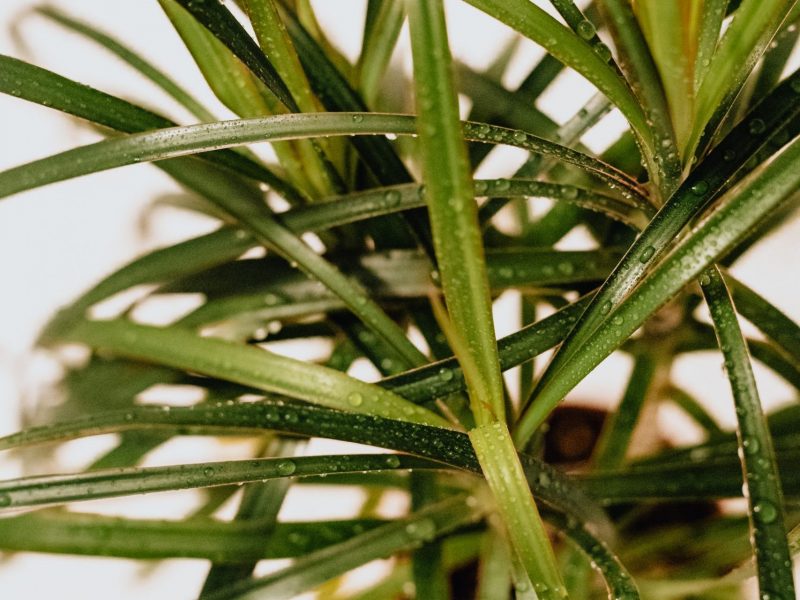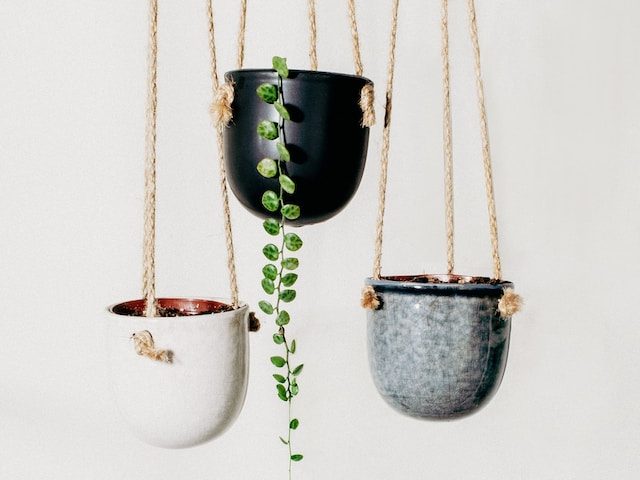
Although often known as one of the hardier houseplant types, the Dragon Tree is by no means immune to the same issues that we commonly face with so many of our beloved plants. There are several different causes that can each cause your Dragon Tree to start dying, some more worrying and fast-developing than others.
Whilst some factors in the care we give our plants or the environment they live in can have a very fast negative impact on your plant’s health, others build up over time and could have been going on for a while before you can spot any visible issues on your plant.
This is why it’s crucial that you make a fast but proper diagnosis as to why your Dragon Tree is dying. This will then allow you to start treating it as soon as possible to revive your dying plant.
Below we will go through each of the most common reasons as well as detailing how to treat the problem effectively and prevent it from happening again in future.
A dying Dragon Tree can indicate overwatering
Overwatering is the main cause of problems across all houseplant types and it’s one you want to catch as soon as possible. This is why it’s always our first port of call when looking to diagnose a problem. Dragon Trees don’t like sitting in puddles of water for long periods of time and prefer their soil to dry out between waterings. Consistent overwatering and soggy soil will cause damage to the root system and mean your plant will lose leaves and become droopy and soft.
To figure out if overwatering is the reason your Dragon Tree is dying, check the moisture levels in the soil immediately. If the soil is quite waterlogged and clumpy then replace it with fresh dry mix which will allow the plant to start to recover. Trim away the rotten roots (these will be black and soft).
To solve and prevent the issue, you want to adjust how you are watering your Dragon Tree. You either want to cut back on how frequently you water or how much water you give your plant each time. Both of these solutions will allow the potting mix to dry out and prevent root rot.
When a plant becomes damaged due to overwatering, it can mean they take a little while to fully recover because their root system started to rot. But be patient and you should start to see your Dragon Tree looking fresher in a few weeks.
Underwatering could also be killing your Dragon Tree
On the opposite side of the moisture spectrum, your Dragon Tree could be dying due to a lack of water. Although the plant will forgive you for occasionally forgetting to water, consistent underwatering can lead to a variety of serious issues if not solved in time. The most common signs of an underwatered Dragon Tree to look out for are dry leaves, light brown spots on the leaves and drooping stems.
Before you change anything about how you water your plant, it’s important to be sure that underwatering is the cause. Take your plant out of its pot to see how dry the potting mix feels. The worst thing would be assuming that your Dragon Tree is dying because it needs more water but it’s actually the opposite or caused by another environmental issue.
Your first instinct to reverse and revive your dying plant might be to drown your Dragon Tree to make up for the lack of water, but this can actually cause more damage and shock your plant. They don’t really like it when there are sudden and quick changes in their environment. If their soil goes from bone dry to super soggy, this can cause your plant to go into shock. The impact of this can be drooping stems and your plant might even lose a leaf or two.
Instead, the best way to revive your dying Dragon Tree is by watering your plant a little bit once a day for a full week. Then moving forward, adjust your watering routine so that you only let the potting mix dry out for a little while but not extended periods of time.
Cold temperatures could be harming your Dragon Tree
Another thing that these plants hate is cold air and consistent cold drafts and this can over time cause some real issues for your plant.
There are a few different causes of cold drafts harming your plant, the most common is cracks in doors and windows that your plant is near to them. But it’s not just cold winter air that you need to be wary of as air conditioning can be your plant’s worst enemy if they are too close to the unit.
The best thing to do to revive your dying Dragon Tree is to move your plant to a warmer area of your home and monitor how the temperature changes throughout the day and throughout the various seasons using a digital thermometer. You are looking to reach their ideal range of 72 degrees Fahrenheit (22 Celsius) during the day (of course it will drop a little at night but it can deal with this to some extent).
Inspect your plant for pests
Whilst rarer than some of the other reasons we went through above, your Dragon Tree might be dying due to a pest infestation. They can be susceptible to gnats, mealybugs and scale insects that will be more than happy to make your plant their home. The reason pests are so damaging is because they suck on the plant’s leaves which exhausts them and leaves behind yellow patches and holes across your plant.
Most pests can be visible just by looking closely but get a magnifying glass if you can’t see any as this will also help you look out for signs they are there (holes in the leaves, small brown dots and white powder). Another top tip is to closely inspect the undersides of the leaves as that’s often where they hang out.
If you do spot pests then isolate your infected Dragon Tree and remove the worst affected leaves and potting mix. This reduces the size of the infestation for a while and will make it easier to tackle. The next step is to treat it rigorously with neem oil and insecticide.
Those are the most common reasons why your Dragon Tree is dying. It’s important to go through each of them whilst closely inspecting your plant and its potting mix so that you can eliminate factors that don’t apply and hopefully make the right diagnosis. Then once you have made changes to either the environment or your care routine, you want to closely monitor your plant to ensure things are improving.
To learn more about caring for your plant and preventing more common issues from arising, check out our Dragon Tree care guide.














